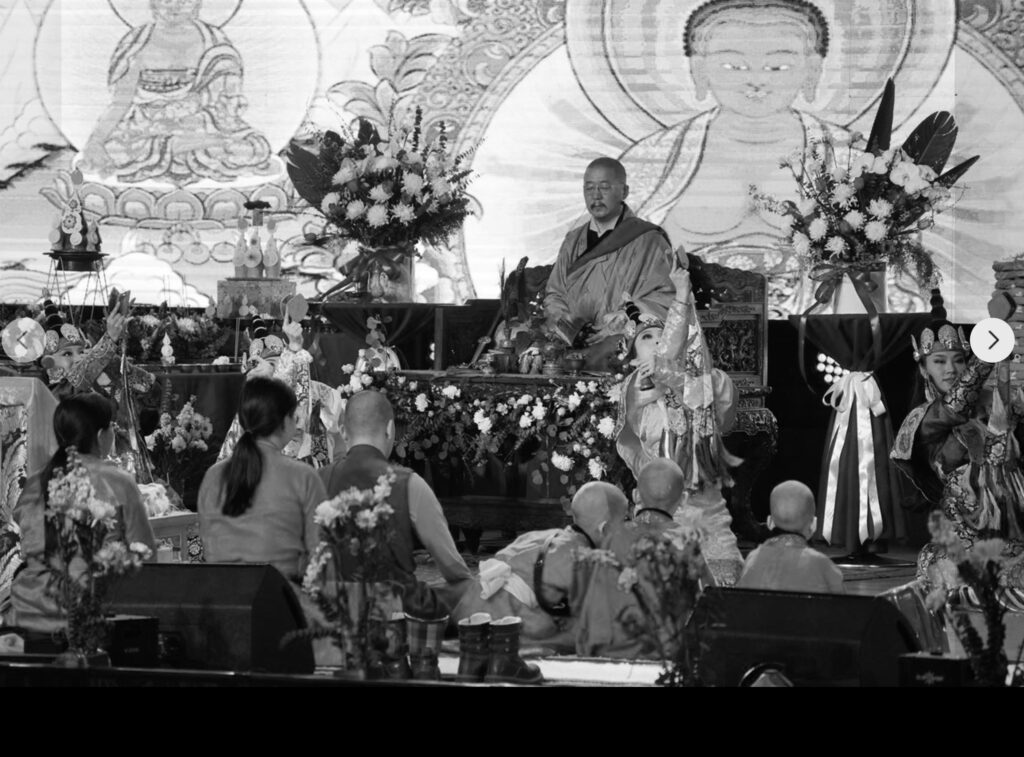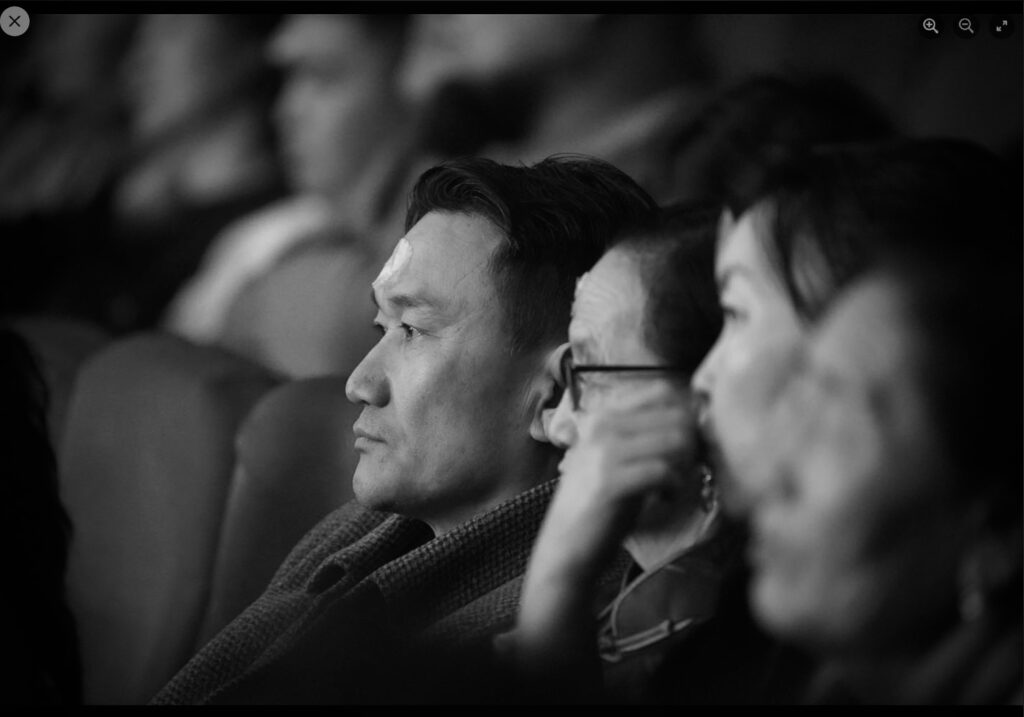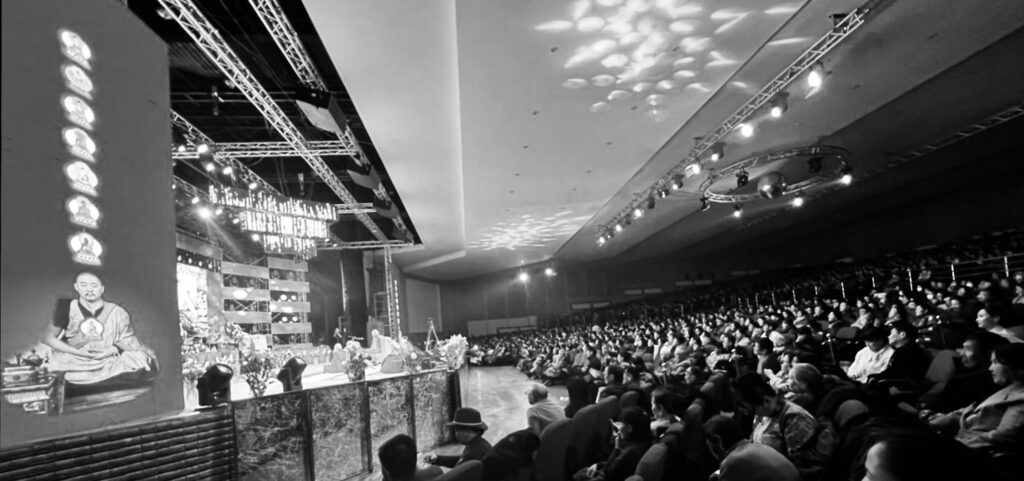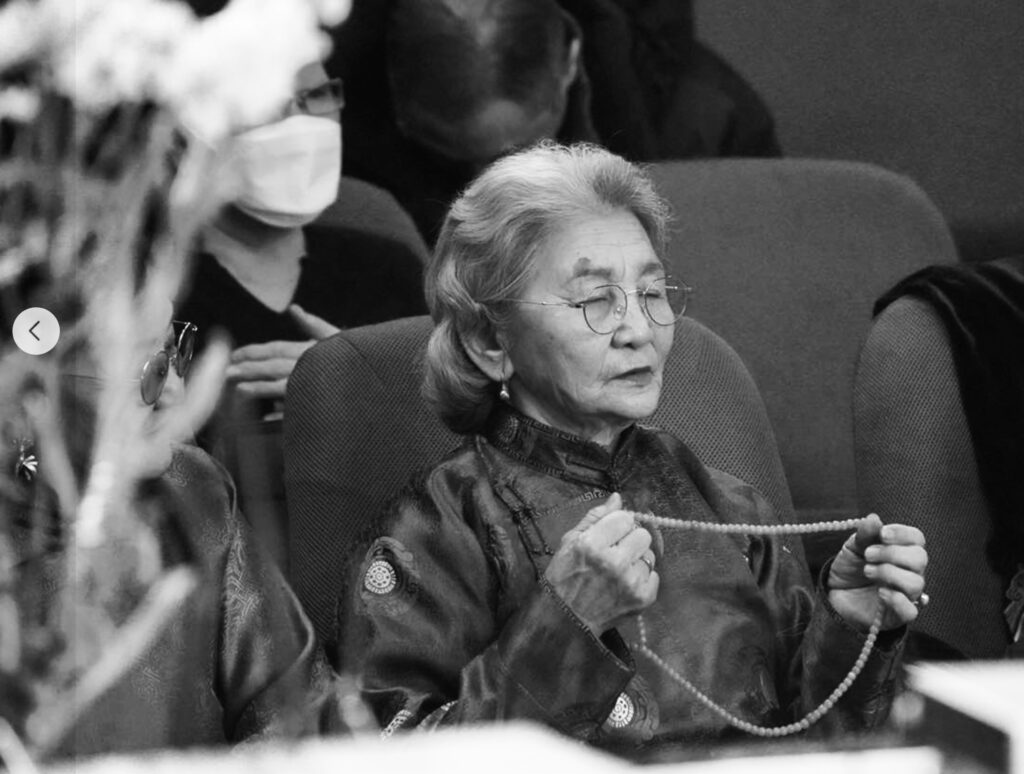Drawing on the published academic literature of other researchers, together with my own participant-observation and community-specific ethnographic fieldwork in Mongolia since 2004, this article introduces readers to the Mongolian concept of huurai. You may like to grab a strong cup of coffee before you embark … also, please note that whilst they may sound the same as well as share certain celebratory qualities, Mongolian culturally-nuanced conceptions of ‘hurrai‘ differ from those of the pan-global English language ‘hurray! At the end of this page (see *notes), I’ve also provided links to other articles related to this topic that were published between 2017 and 2019 for those of you who may be interested. And so …
Huurai Relations
The phenomenon of huurai kin is one of the most distinctive features of post-socialist Mongolian kinship (Hwan-Young Park 2003, p152). The concept of huurai kinship in post-socialist Mongolia also corresponds to the ‘non-jural kinship’ described by Pitt-Rivers (1973, in Park, p153). Non-jural kinships can imply and therefor implicate notions of the physical, the ‘natural’, the ethical and moral (cf. wholesome-ness) and the divine.
The term huurai kin has also been translated as adopted-kin or sponsored-kin or god-kin (Hangin 1986, p696). In this sense, huurai relations are similar to ‘mit‘ or ritualised friendships (see Humphrey, 1985). Such relationships are exemplified by the active and functioning Teacher-disciple dyad, as well as in the (potential) bonds between socially-engaged practitioners who not only have in common the same ‘father guru’ (one’s principal mentor), but who also aspire to embody the associated religious beliefs and secular practices.
One hopes that the ties of huurai kinship in the current (still) post-socialist period are as strong as those of other robust models of kinship in terms of people’s commitment to mutual assistance. According to Park (1997, p153) huurai kin try to satisfy each other’s needs, but they appear to expect less immediate return for ‘things’ given than in exchanges between non-kin. My own experience and fieldwork observations in Mongolia are consistent with this view.
In an analysis of the use of metaphors and ideologies of kinship in post-socialist Mongolia, Park (1997, p143) also argues that reliability and the trust associated with kinship relations are highly valued among people in post-socialist Mongolia’s transitional period. Now well and truly into the ‘transitional’ phase, in relation to my own community of (Mongolian) Buddhist practice at the centre of which is Zava Damdin (1976- ), reliability and trustworthiness continue to be highly-regarded and sincerely valued personal qualities. Whilst these qualities are of course also valued by others all over the world, these qualities are foregrounded in situations where the flood of social and political change away from a stable what was, towards that of a yet to be continues unabated.
In terms of a post-socialist construction of identity, the Khalkha Mongolian women in my own qualitative ethnographic study (n=34, 2008-2011, see below) share similarities to women in Park’s study (2003, p159). They too are ‘individually situated within a metaphorically delineated matrix of (fictive) kinship relationships that permeate, ‘the universe of Mongolian society and provide the psychological underpinnings for relationships in it.’
There were four years and four visits to Mongolia before I conducted this series of key informant interviews in 2008 and many more years of further study have flown by since then. Park’s definition of women’s individual situated-ness is still the most useful I can find. Why? Because it not only accommodates diversity but it also supports the telling of detailed stories or as ethnographers say, ‘thick’ descriptions.
Kinship Metaphors: Mongolian Concepts of Yas and Tal
Whilst matri-lineal kinship in Mongolia was represented by either blood or flesh metaphors, and patri-lineal kinship was symbolised by bone (cf. Erdene-Ochir 1991 and Nyambuu 1991), ‘today however, blood is at the centre of kinship metaphors as it refers to both patri-lateral and matri-lateral kinship.’ In this sense, although the metaphor of ‘bone’ (yas) continues to be used in reference to Mongol nationality or ethnicity, Park (p144) argues that kinship may no longer be thought of as differentially lineal, but rather as one thing having two sides (tal).
Over my first ten years of participant-observation field work in Mongolia (2004-2013), I would have agreed with Park’s own observations, that whilst the huurai relationship is a form of fictive kinship, in the sense that its members employed kinship terms to address each other, people were motivated by moral values rather than economic benefits (Park 1997). For example, whereas referring to one another as ‘sisters’ was for quite some time commonplace, doing so now is no longer in vogue. However, it comes as no surprise and understandably so, that in Mongolia a range of economic considerations and economic-benefits-of-association are gaining traction.
Having endured the austerities and imposed limitations of the recent Covid-laden years, and for some also the opportunities, strengthening and revitalisation of a range of kinship phenomena in Mongolia is re-emerging from the private out into the public domain. This shift is happening in many contexts, situations and on many different levels. Although here, we just continue to observe developments in what the academic literature describes as the Mongol-Tibetan interface of Mongolian Gelugpa Buddhism in Mongolia.
During a recent phase (from 2004) of the post-soviet-socialist years (from the late 1980s) — for now putting aside the other extra-ordinary cultural reconstruction efforts of Zava Damdin’s Mongolian mentor, the famous Khalkha Mongol Gelug prelate His Eminence Guru Deva Rinpoche (1910-2009) — it was an older generation of Tibetan Gelug prelates (now in their 70s+) who have come from elsewhere to Mongolia initially at Guru Deva Rinpoche’s invitation in 2004 to support his local cultural reconstruction efforts, and who now have gone on to seed their own lineages of praxis and establish their own ‘in Mongolia’ nodes.
When well-resourced, those who have thrived over the past two decades (2004-2024) are (now) affiliates of loosely-connected but non-the-less pan-global Tibetan-centric culturo-religious networks. Others have not been so fortunate, having come and gone like the restless winds that sweep Mongolia’s vast and beautiful grassland steppe … not to worry though … Now that the airways are open again, a stream of international newcomers is again pouring into cosmopolitan UB. Representatives from non-Mongolian organisations are arriving to broker and ‘contribute’ to emerging contemporary Mongolian socio-cultural and other profitable spheres.
In broader terms, you may like to take a look at the English language edition of the Mongolian National News Agency to get a feel for what else is currently going on. For example, Australia is providing humanitarian assistance in response to the extreme and unprecedented current dzud weather condition in Mongolia [Accessed: 2 March 2024].
________________________________________________________________________
Otoch Manal Initiation (Mong. Оточ манал авшиг)

Photo 01. Zava Damdin (1976- ) Оточ Манал (Eng. Otoch Manal) Initiation at the Ulanbaator Palace in Mongolia. 17 February 2024. Reprinted on CPinMongolia.com with permission.
If indeed we do agree, that Buddhist practice forms and transforms the one who practices, along with those who are also involved in and affected by the practice, and that praxis aspires to a more visible history-making action that can transform a local world, then today’s events are a combination of the two.
Today, Mongolia’s Zava Damdin Lobsang Dargaa (1976- ) convened a khural (Mong. xурал) for and with his huurai kin at the Ulanbaator Palace in Mongolia. The purpose of this complex and long ceremony is to transmit to the invited assembly a specific Mongolian Gelug Buddhist lineage initiation into the practice of Оточ Манал (Eng. Otoch Manal)* which attendees then take with them so as to develop their own insights and practical applications.
* In other cultures, other communities of practice and their reciprocal authoritative lineages of transmission, the Buddhist conception of Otoch Manal is also known by names such as Bhaiṣajyaguru (Sanskrit), Yagsa Yeorae (Korean: 약사여래), Будда Медицины (Russian) and Medicine Buddha (English).
Observations
Located right at the nexus of the Mongol-Tibetan interface of Gelug lineage transmission in Mongolia, throughout today’s proceedings, Zava Damdin (1976- ) continues to express and embody his heart-felt homage to his two Gelug heart-lineage masters; one of ethnic Tibetan descent, the other of Khalkha Mongol ancestry. Unwavering in his devotion, this has always been so.
With the exception of a senior Tibetan prelate, a long-time supporter of Zava Damdin and his invited guest as always visibly honoured in terms of seating and location, all the attendant noble Lamas and lams (monks) are now Khalkha Mongol. It has taken more than two decades of persistent effort of cultural revitalisation* for this stable and growing huurai kinship network to fulfil its dream; much longer if one takes the prequel of cultural preservation into account.

Photo 03. Zava Damdin (1976- ) Оточ Манал (Eng. Otoch Manal) Initiation at the Ulanbaator Palace in Mongolia. 17 February 2024. Reprinted on CPinMongolia.com with permission.
I should also point out that in terms of weather, it’s the heart of winter here in Mongolia. The temperature in Ulanbaator today swung somewhere between minus 30 and minus 12 Celsius! In spite of this, the convention centre hall was packed with Mongolian people and their families who made the considerable personal effort to attend.

Photo 04. Zava Damdin (1976- ) Оточ Манал (Eng. Otoch Manal) Initiation at the Ulanbaator Palace in Mongolia. 17 February 2024. Reprinted on CPinMongolia.com with permission.
One could surmise then, when reflecting on the success of such a large scale inter-generational public event, in terms of both attendance and the subsequent positive feedback from attendees (for example, 500+ after-the-event affirming posts to FB the following day, as just one of the metrics), that this particular congregational transmission and its assembly makes visible one of the important progressive developments and generational shifts at play in Mongol-centric (rather than Tibetan-auspiced) communities of Gelug huurai kinship networks and their modality of practice. Here, the creative and talented next-generation Khalkha Mongol Gelug scholar-poet Zava Damdin (1976- ) is at the helm.

Photo 05. Zava Damdin (1976- ) Оточ Манал (Eng. Otoch Manal) Initiation at the Ulanbaator Palace in Mongolia. 17 February 2024. Reprinted on CPinMongolia.com with permission.
On this auspicious day, as my own small contribution I offer this researched article as background and acknowledgement of today’s important events.
“Huurai, Huurai, Huurai!”
_______________________________________
Bibliography
Erdene-Ochir G. 1991. Hüneer hün hün mongol uhaan’I survalj. Ulaanbaator.
Gold, Lorna. 2004. The Sharing Economy: solidarity networks transforming globalisation. Aldershot, Hants England: Ashgate.
Humphrey, Caroline. 1985. “Barter and Economic Disintegration.” Man 20 (1):48-72.
Nyambuu, H. 1991. Hamgiin erhem yoson. Ulaanbaator.
Park, Huan Young. 1997. Kinship in Post-Socialist Mongolia: its revival and reinvention. Cambridge University: Ph. D. thesis.
Park, Hwan-Young. 2003. “Metaphorical and Ideological Concepts of Post-Socialist Mongolian Kinship.” Inner Asia 5 (2):143-162.
Pith-Rivers, J. 1973. “The Kith and the Kin.” In The Character of Kinship, edited by J. Goody. Cambridge: Cambridge University Press. pp89-105.
_______________________________________
* Notes
For other qualitative research related to this article (2024), please refer to:
- Landscape 08: Women and re-place-ing Mongolian Buddhism (2019)
- Artscape 08: Revitalising the life of social objects (2019)
- Landscape 05: Living Voices (2018)
- Landscape 03: Transition-ing (2017)
- Landscape 02: a social matrix for local reconstruction (2017)
- Motif 03: Dragons Dancing with Blue Wind (2017)
A series of vignettes from a larger collection of written narratives about contemporary Mongolian women and aspects of the cultural and social worlds within which they are individually situated can be found in the INDEX to this website CPinMongolia.com. If these are of interest, a good place to start would be:
Each vignette is grounded in my ethnographic fieldwork (2004- ) and interviews with the person about whom I write. All of the people in this assemblage are Khalkha Mongol, the largest group of ethnic Mongol peoples living in Mongolia today. See: Pleteshner, C. (2011). Nomadic Temple: Daughters of Tsongkhapa in Mongolia (Unpublished manuscript, The Zava Damdin Sutra and Scripture Institute Library Archive, Ulaanbaator).
Attribution
In keeping with ethical scholarly research and publishing practices and the Creative Commons Attribution 4.0 International License, I anticipate that anyone using or translating into another language all or part of this article and submitting it for accreditation or other purpose under their own name, to acknowledge this URL and its author as the source. Not to do so, is contrary to the ethical principles of the Creative Commons license as it applies to the public domain.
end of transcript.
Refer to the INDEX for other articles that may be of interest.
© 2013-2024. CP in Mongolia. This post is licensed under the Creative Commons Attribution 4.0 International License. Documents linked from this page may be subject to other restrictions. Posted: 17 February 2024. Last updated: 2 March 2024.
